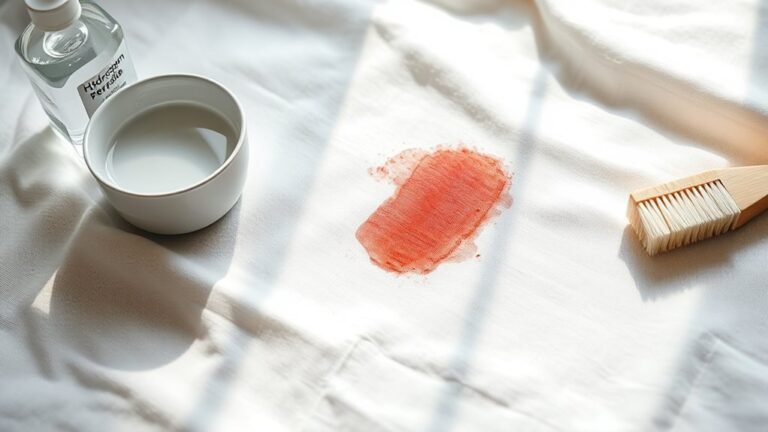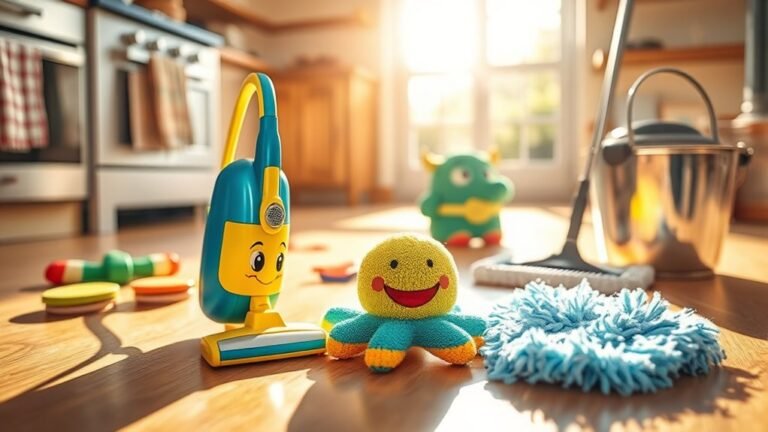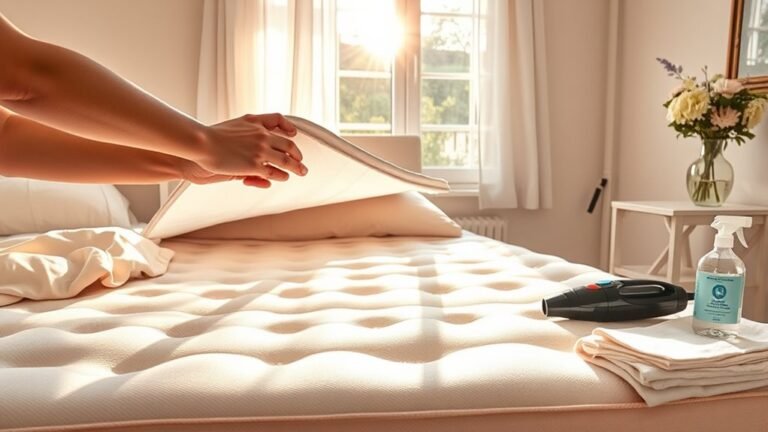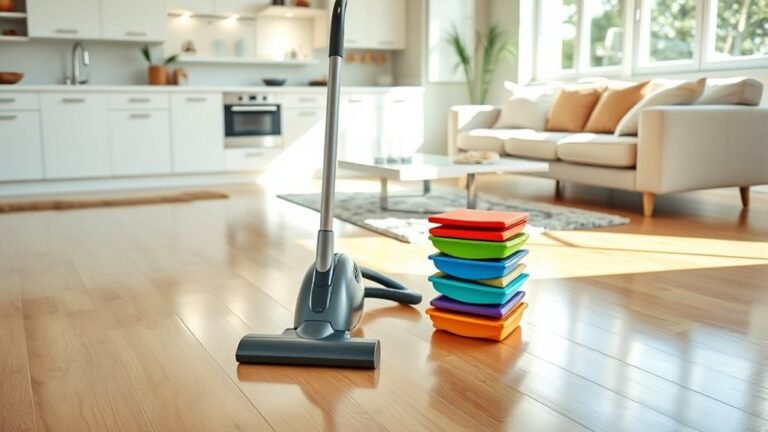How to Clean Hairspray off Walls
To clean hairspray off walls, start by identifying your wall type, then gather mild dish soap, vinegar, soft cloths, and sponges. Clear the area and use warm soapy water for painted walls or a vinegar-water mix for tougher stains. Dampen your cleaning tool, scrub gently in circular motions, and rinse with a clean cloth. For stubborn residues, try rubbing alcohol. Wear gloves and guarantee good ventilation for safety. Keep going to discover more detailed cleaning techniques!
##

Cleaning hairspray off walls can seem daunting, especially if you’ve allowed the residue to accumulate over time. This article will guide you through effective cleaning strategies tailored to various wall materials, such as painted drywall, wallpaper, and tile. You’ll learn how to identify your wall’s surface and choose the appropriate cleaning method to tackle stubborn hairspray buildup without causing damage. By following these tips, you can restore your walls to their original state and enjoy a clean, refreshed living space. Get ready to reclaim your environment with our expert advice! Using the right cleaning materials is essential to avoid damaging your walls while effectively removing hairspray residue.
Preparation For Cleaning
Before you start tackling the hairspray residue, it’s important to gather the right supplies and prepare your workspace. First, identify the wall types in your home, as different surfaces may require specific cleaning solutions. For painted walls, make sure you have gentle cleaning supplies like a mild dish soap and water solution. If your walls are wallpapered, keep in mind that harsher chemicals could damage the surface, so opt for a soft cloth and a vinegar-water mix instead. Clear the area of any furniture or decor to avoid accidents. Having a step stool handy can help you reach higher spots easily. By organizing your supplies and workspace, you’ll set yourself up for a more efficient cleaning process.
Tools and Chemical Required
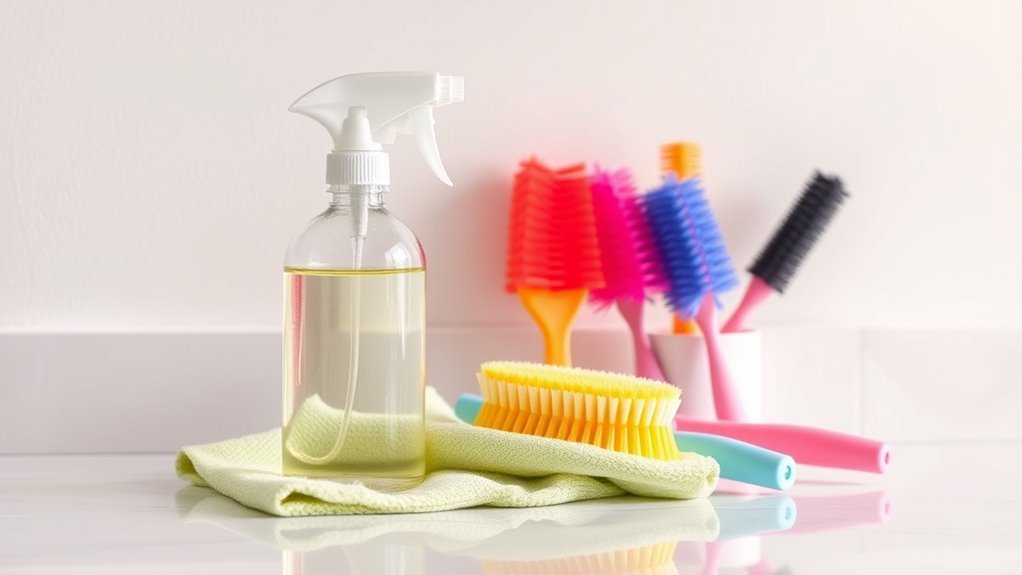
As you prepare to remove hairspray from your walls, having the right tools and chemicals on hand can make the process much smoother. You’ll need effective cleaning solutions and scrubbing tools to tackle the stubborn residue. Here’s a quick overview of what you should gather:
| Tools | Cleaning Solutions |
|---|---|
| Microfiber cloths | Warm soapy water |
| Soft sponge | Vinegar and water mix |
| Non-abrasive scrub brush | Rubbing alcohol or glass cleaner |
Using a vinegar and water mix can help neutralize odors and break down residues effectively without harsh chemicals.
How to Clean:
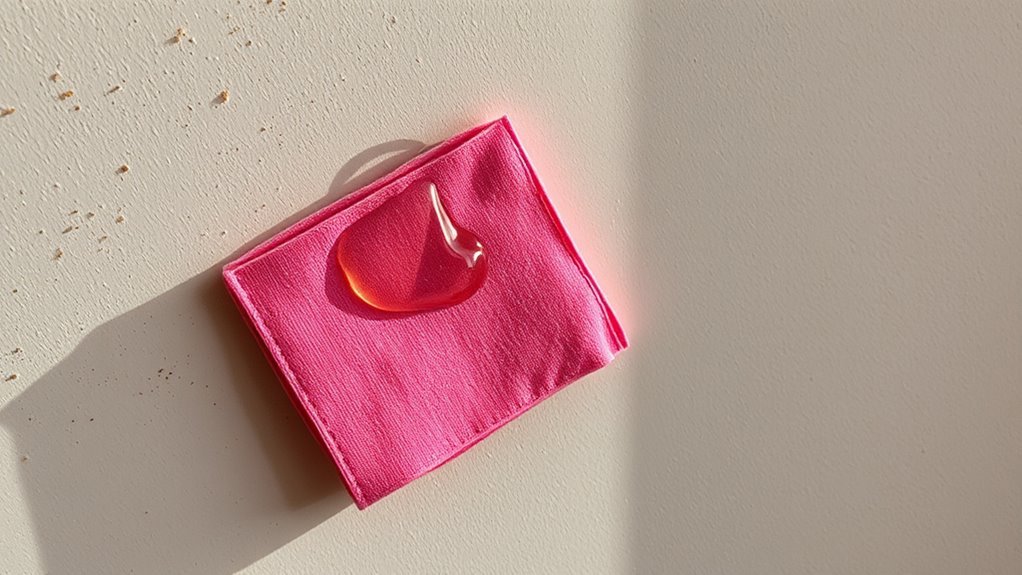
Step 1: Test the Cleaning Solution
- Select your preferred cleaning solution.
- Apply a small amount to a soft cloth or sponge.
- Choose an inconspicuous area of the wall, such as a corner or behind a piece of furniture.
- Gently dab the solution onto the area to ensure it doesn’t damage the paint or finish.
- Wait a few minutes to observe any adverse reactions.
Step 2: Prepare Your Cleaning Solution
- For painted walls, mix warm water with a few drops of mild soap in a bucket.
- For tougher stains, prepare a vinegar-water solution (mix equal parts vinegar and water) or use rubbing alcohol.
- Stir the solution gently to combine the ingredients.
Step 3: Dampen Your Cleaning Tool
- Take a soft cloth or sponge and dip it into your prepared cleaning solution.
- Wring out the cloth or sponge to ensure it is damp but not soaking wet.
- Excess moisture can damage the wall, so be sure to remove any dripping liquid.
Step 4: Clean the Hairspray Residue
- Starting from the top of the stain, gently scrub the hairspray residue using circular motions.
- Apply light pressure to avoid damaging the paint; be patient and avoid vigorous scrubbing.
- Work your way down the stain, ensuring that you cover all affected areas.
Step 5: Address Stubborn Stains
- If the hairspray residue remains, switch to the vinegar-water solution or rubbing alcohol.
- Repeat the dampening process with your chosen stronger solution.
- Again, scrub gently in circular motions until the residue begins to lift.
Step 6: Rinse the Area
- After successfully removing the residue, take a clean cloth dampened with plain water.
- Wipe down the cleaned area to remove any remaining cleaning solution.
- Be thorough to ensure no soap or vinegar residue is left behind.
Step 7: Dry the Wall
- Use a clean, dry towel to gently pat the wall dry.
- Make sure to dry the area thoroughly to prevent streaks or moisture damage.
- Check for any missed spots and repeat the cleaning process if necessary.
For ongoing upkeep, consider incorporating regular wipe-downs into your cleaning schedule to keep walls free from buildup and maintain a fresh appearance.
Safety Consideration
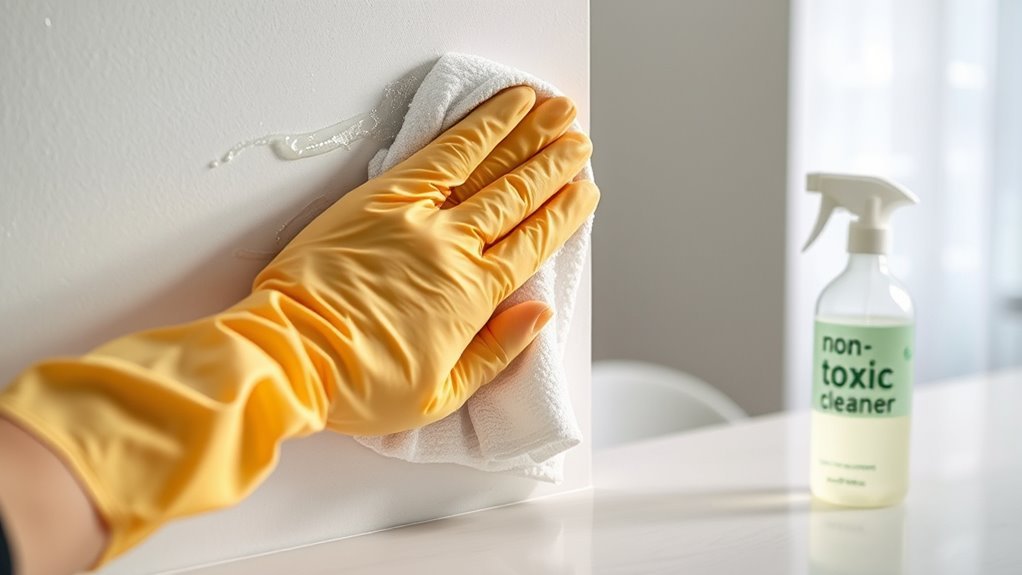
When cleaning hairspray off walls, it’s essential to take into account safety precautions to protect both yourself and your living space. Start by wearing protective gear such as gloves and goggles to shield your skin and eyes from cleaning solutions. Verify your workspace is well-ventilated; open windows or use fans to circulate air, reducing inhalation of harmful fumes. If you’re using a commercial cleaner, read the label for specific safety instructions and warnings. Avoid combining cleaners, as this can create toxic fumes. Keep pets and children away from the area until cleaning is complete. Taking these safety precautions not only safeguards your health but also verifies a more effective cleaning process without unintended consequences. Additionally, using plant-based disinfectants can provide an eco-friendly and safe method for cleaning sensitive surfaces.
Tips to keep clean for long time
To maintain a clean wall free from hairspray buildup, it’s essential to establish a regular cleaning routine. Start by dusting your walls weekly to prevent residue accumulation. Incorporate preventive measures like placing a decorative screen or curtain near your styling area to catch excess spray. Every month, use a gentle cleaner and soft cloth for thorough maintenance. Don’t forget to check for any stubborn spots; tackling them promptly will save you time later. If you notice a buildup, a mixture of vinegar and water can work wonders. Remember, consistency is key—regular maintenance will keep your walls looking fresh and free from sticky residues. Enjoy the freedom of a clean environment by taking these proactive steps! Avoiding the use of abrasive tools will help prevent scratches and damage to your wall surfaces during cleaning.
Frequently Asked Questions
Can I Use Vinegar to Clean Hairspray off Walls?
Yes, you can use vinegar to clean hairspray off walls. Vinegar’s effectiveness lies in its natural acidity, which helps break down sticky residues. Mix equal parts vinegar and water in a spray bottle, then apply it to the affected area. Let it sit for a few minutes before wiping it off with a soft cloth. If you prefer cleaning alternatives, consider using rubbing alcohol or commercial cleaners specifically designed for sticky substances.
How Often Should I Clean Hairspray From Walls?
You might think cleaning hairspray off your walls is a rare chore, but it’s actually best to do it every few weeks, depending on your usage. Establish a cleaning schedule that fits your routine; regular maintenance keeps buildup at bay. If you notice any residue, don’t wait too long! Frequency guidelines suggest addressing it sooner rather than later, ensuring your walls stay fresh and your freedom to style remains unhindered.
Will Cleaning Solutions Damage Painted Walls?
Cleaning solutions can potentially damage painted walls, especially if they’re too harsh or not suitable for your wall finishes. It’s essential to test any cleaning product on a hidden area first to check for paint durability. Gentle solutions like mild soap and water are often safe. Remember, the type of paint and finish you have will influence how resistant it is to cleaning, so always proceed with caution to maintain your wall’s appearance.
Can I Use a Steam Cleaner for This Task?
You can use a steam cleaner for this task, but be cautious. The steam cleaner’s effectiveness can vary based on wall type and paint. While it may lift hairspray, alternative cleaning methods like vinegar or a gentle detergent might be safer for delicate surfaces. Always test in a small area first. Remember, freedom lies in choosing the right tool for the job—don’t rush; take your time to guarantee the best results without damage.
What Should I Do if Stains Persist After Cleaning?
If stubborn stains persist after cleaning, don’t worry; there are alternative methods you can try. Start by using a mixture of baking soda and water to create a paste. Apply it to the stains, let it sit for a few minutes, then gently scrub with a soft cloth. If that doesn’t work, consider using a vinegar solution or a commercial adhesive remover, ensuring you test it on a small area first to avoid damage.

